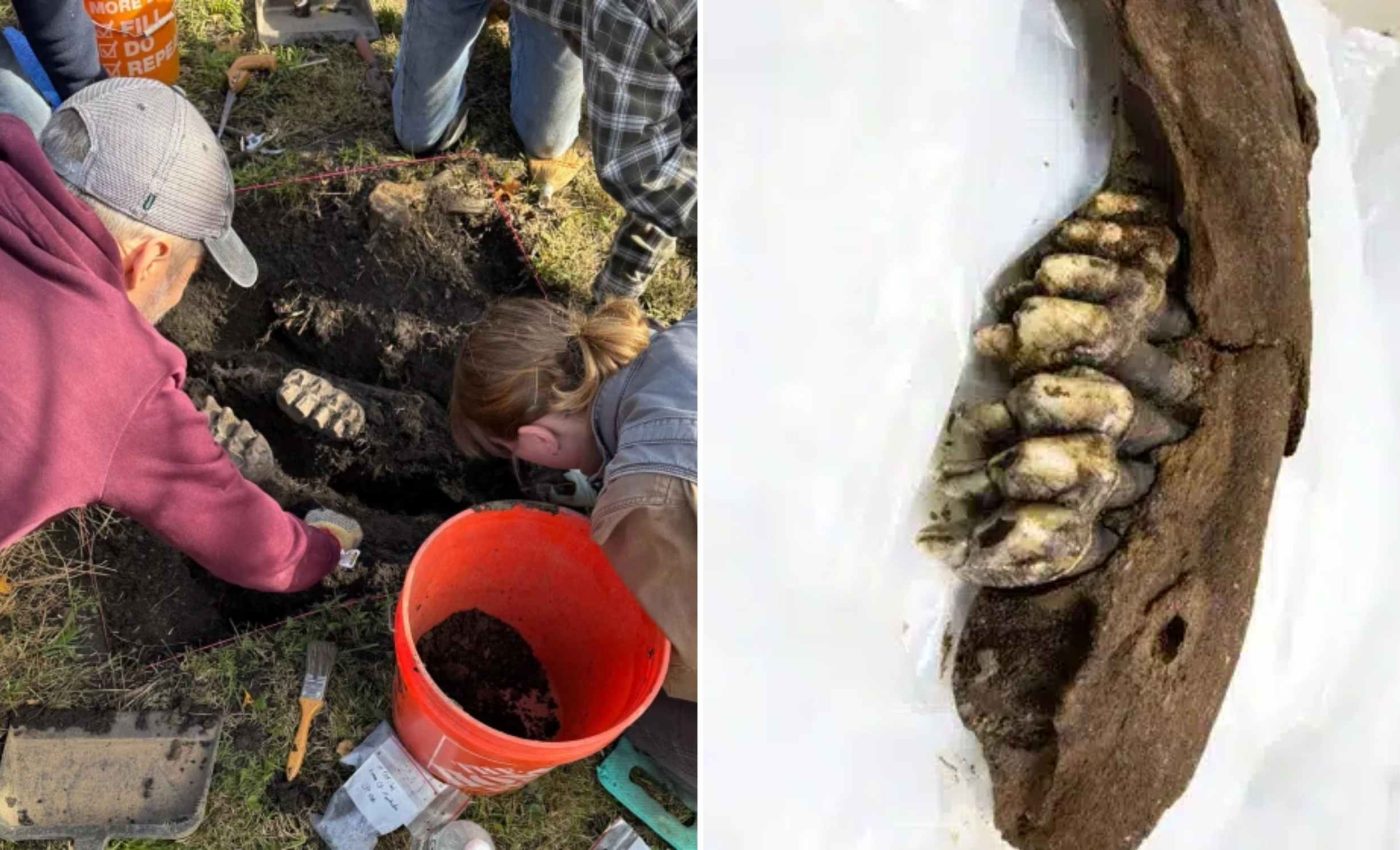
Student discovers a 34,000-year-old mastodon fossil by accident while walking around a farm
A teenager in Iowa headed outside to look for arrowheads on a friend’s farmland. He never expected to make a discovery that would send ripples through the scientific community.
He stumbled upon a massive bone later identified as part of a mastodon, an extinct elephant cousin believed to have died out around 10,000 years ago.
According to Tiffany Adrain, the special collections manager at the University of Iowa’s Paleontology Repository, the jaw bone belonged to a young animal. Adrain oversees one of the region’s largest collections of ancient specimens.
“He cradled the fossil in his arms, which is very heavy, and carried it up to the farmhouse,” said Adrain. It was still so fresh that letting it dry completely in the sun would have destroyed it.
Learning from mastodon fossils
The jaw measures about 30 inches in length and is from a juvenile that likely stood around 7 feet tall. Researchers have noted that these animals roamed much of North America during the Late Pleistocene, which spanned roughly from 129,000 to 11,700 years ago.
This freshly uncovered fossil was swiftly wrapped in plastic to keep it from deteriorating. The student had luck on his side, because the fossil may have crumbled in just a few weeks if nobody had found it.
People often confuse mastodons with mammoths. Mammoths usually had high-crowned teeth adapted for grazing, whereas mastodons had distinct ridged molars suited for munching on branches and leaves.
Both animals are distant relatives of modern elephants. Mastodons, though slightly smaller than many mammoths, could still grow impressively large, with some males sporting tusks of remarkable length.
Iowa’s landscape once supported a surprising variety of big creatures. Mammoths, mastodons, giant ground sloths, and huge bears roamed parts of the Midwest for millennia.
Many of these species thrived in wetlands and forests that now appear very different from the farmland that covers much of the state. Shifting climate patterns and changes in vegetation contributed to their eventual disappearance.
Why preservation matters
Keeping the fossil moist was key. Mastodon bones can degrade quickly once exposed to air and light, which explains why quick thinking can be as important as scientific insight.
Experts say that staying alert to unusual shapes or textures along creek beds can lead to more finds. Mastodon fossils have turned up where water currents erode buried layers and reveal ancient surprises.
The farm owners chose to donate the jaw. Large fossil discoveries can captivate the public, yet landowners may also worry about trespassing or disruptions. In this instance, they quietly ensured the fossil reached experts for proper study.
Once at the University of Iowa’s Paleontology Repository, the specimen joined a collection of over a million artifacts.
The repository continues to examine how this young mastodon lived and what its discovery can show about Ice Age life.
Why this discovery matters for science education
Young people getting involved in discoveries like this can make science feel real and immediate.
When a student stumbles on a fossil that turns out to be over 30,000 years old, it changes the way science is seen – not as something that only happens in labs, but as something alive in everyday life.
Institutions like the Paleontology Repository regularly work with students to catalog specimens, which helps train the next generation of scientists.
In fact, around 148,000 items in the collection have already been logged with the help of local high school and college students.
Mastodon fossils and lost ecosystems
Fossils like this jaw help researchers understand Late Pleistocene ecosystems and how creatures adapted to harsh conditions.
One recent investigation suggested that regional mastodon populations expanded during warming cycles but still vanished by the onset of a cooler climate event.
Such discoveries feed larger debates over what drove these animals to extinction. Climate shifts, human activities, and changes in habitat are all factors researchers consider as they piece together the story.
Scientists believe mastodons spread across much of North and Central America for more than 20 million years.
They flourished in flexible habitats that included forests and wetlands, but they ultimately disappeared in the late phases of the last Ice Age.
Modern archaeology and paleontology depend on keen-eyed individuals just as much as trained specialists. Many noteworthy finds start with curious people simply paying attention to what’s around them.
The study is published in Boreas.
—–
Like what you read? Subscribe to our newsletter for engaging articles, exclusive content, and the latest updates.
Check us out on EarthSnap, a free app brought to you by Eric Ralls and Earth.com.
—–













